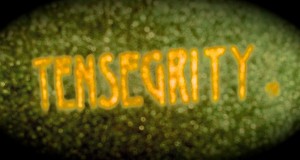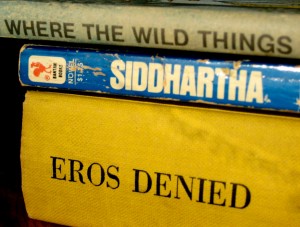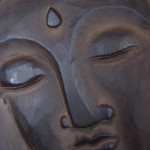
Sobriety is a state of calm and balance that belies an underlying state of tension. This tension is the holding together of opposite tendencies in a cohesive functional way, to allow for a full actualization of self and an ability to flow with and navigate change. Chiefly, these bipolar opposites reflect some interplay of Yin and Yang or finite and infinite or mater and spirit.
We are spirit/material beings. When spirit stirs, we seek to transcend our human/mater limits. We might deaden the body with numbing “spirits” to release our spirit and end up falling down drunk—the opposite of sobriety. On the other hand, we might exert such material restraint upon the self that we shadow over desire completely, becoming a “dry drunk,” equally non-sober. Sobriety demands a reconciliation and inclusion of each of these very opposite needs into an integrity of self.
In Vedic philosophy, Sattva is the fundamental principle of BALANCE that constructs our world. In this cosmology there are two other fundamental building blocks, Rajas and Tamas, that entwine with Sattva to construct our reality.
Rajas, like Yang, is active movement: spice, desire. Tamas, like Yin, lies dormant in deep inertia. For life to happen both Rajas and Tamas must participate. Life dominated by Rajas is life consumed by desire, knowing no restraint. From a bipolar perspective this is life on one big manic trip. Life dominated by Tamas is a life frozen in potential, completely restrained. From a bipolar perspective this is a major depression.

Sattva, like sobriety, is the principle of balance that reigns in these opposite tendencies to work harmoniously to promote change and growth. If Yin and Yang don’t join in a complementary relationship, there is no new life. Sattva bears the tension of finding the right place for these opposites to promote life and balance.
The Middle Way is the path that the Buddha discovered that leads to liberation from suffering the failure to reconcile the opposites of self-indulgence and self-denial. Buddha pointed out that addiction to sense pleasure was equivalent to extreme denial of pleasure. His own life began in the kingdom of his father where he was exposed only to pleasure. Eventually he forsook his father’s kingdom for the ascetic life of complete renunciation of worldly pleasures. Ultimately he accepted a bowl of rice milk from a young girl, realizing that the nourishment of Mater was essential for the realization of Spiritual enlightenment.
The Middle Way is a path that neither denies pleasure nor denies restraint, but instead finds the necessary balance between these needs in order to achieve the calm necessary for enlightenment. To deny pleasure or to deny restraint sows a Karmic seed of continued suffering until we can achieve a balance of liberation. Thus, the Middle Way is the path of sobriety and Sattva, a state of balanced tension that reconciles the opposing tendencies within all of our selves.
In Magical Passes Don Juan states, “To navigate, in a genuine way in the unknown…a sorcerer has to be extremely sober.” The unknown is all around us, it is now. To part the veils and fully live in the unknown we must achieve sobriety, Sattva, and the Middle Way—a balanced whole of opposing tendencies and needs that flow with the changes, versus clinging to the extremes.

P.S. Jan gives permission for me to reveal that she did eat a piece of carrot cake and she says it was yummy!
In the tension, as always,
Chuck
